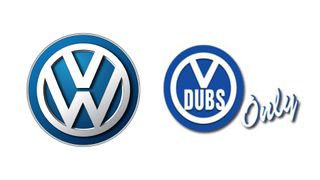By John Taite
McDonald’s, Old Spice and Corona prove the best branding is multi-sensory.
Multi-sensory branding is on the rise because of one simple human truth; consumers perceive the world using all of their senses. For a brand to succeed in the modern age, it needs to be more than meets the eye, and savvy marketers are building holistic expressions that consider what people see, hear, feel and believe.
When your messaging uses a strategic combination of visual and sonic branding, all boats rise with the tide. Visual branding works on a cognitive level, sonic assets deliver on a deeper emotional level. When they’ve been designed to work in harmony, these sensory dance partners leave a lasting impression that improves performance exponentially (see our pick of the best sonic logos).
The impact of sonic branding
Think of some of the world’s classic visual icons — the Golden Arches, Apple, AT&T’s Globe or the Corona wordmark. These brands have also developed their ecosystems to include distinct audio cues and sonic signatures. “Ba-da-ba-ba-ba” is just as evocative as the typography of McDonalds. AT&T’s “chimes” are the brand’s second most recognizable asset. Corona just launched a sonic identity that evokes beach relaxation within seconds and if you turn on a MacBook with your eyes closed you still know exactly who made it.
Yet some of the old guard still raise their eyebrows at the concept of sonic branding. Many think of it as intangible, or too good to be true despite the data showing it improves appeal, attribution and purchase intent. Some naysayers prefer a rudimentary type of “sonic branding” that only exists to score their logo animations. Unfortunately that type of waveform window dressing falls flat in audio-only environments where their visuals can’t be seen.
To be fair, if your only reference points are bad jingles or the 15 brands using the sound of a doorbell, it’s easy to assume the whole discipline is flimsy and ephemeral. It doesn’t help that a wave of music houses jumped on the bandwagon and are selling poor imitations to unsuspecting clients (“Would you like one note or two with your endcard, Madam?”)
Before I started working in the world of sonic branding, I was sceptical myself. But all that changed when I discovered the interconnected similarities between great sonic branding and the way visual brands are built.
Just as a visual identity can instantly evoke a sense of familiarity and trust, a strategically crafted sonic identity can convey authenticity, brand personality, and a variety of specific attributes. Although Sonic Logos or Mnemonics get most of the headlines, every sound or music choice a brand makes leaves a lasting impression on consumers. From advertising and apps to social, experiential and phygital.
A global brand such as American Express needs a sonic ecosystem that can span their entire customer journey. They craft every interaction from call centres, to mobile payments, to airport lounges (where they also have a branded scent). Their distinct sound and music helps Amex amplify feelings of strength, trust and a sense of adventure for their customers. When you interact with them, you feel like a part of something. You don’t live life without it.
The data
There’s also scientific backing behind that shows just how effective sonic branding can be. Many research studies show that ads with a sonic branding cue see an 850% uplift in branded attention. Consider this, if you hear a familiar jaunty whistle from across the room, you’ll probably clock it was an Old Spice commercial without paying any attention to it. In fact, that Old Spice whistle might in your head right now!
When sonic and visual elements are aligned, they reinforce one another, creating a more complete, unified brand experience. In our work with PepsiCo, we’ve seen significant uplift for their visual brand assets when sonic cues are applied. According to audio research company Veritonic, the introduction of sonic assets for the chip brand Tostitos saw a 38% increase in brand recall after only six months in market. Not only is audio a powerful tool on its own, it can actually supercharge the rest of a brand’s architecture.
How to succeed at sonic branding
When we’re partnering with brands, we ensure that elements of the strategy and discovery phase feel almost identical to visual brand building. Analysing the market, the competitors, target consumers and place in culture. Most of our clients are dipping their toes into sonic for the first time, so there needs to be an extra layer of education and it helps to compare it with development they’re more familiar with.
We become musical method actors, absorbing brand essence, purpose and personality and then translate that essence into sound. We develop concepts, emotional territories, adding instrumentation and audio design to bring a brand’s distinct, inevitable sound to life. Research adds confidence that the work is effective and will produce the desired results.
When we collaborated with Wieden+Kennedy on the global sonic identity for Corona, we needed to craft a musical expression that would be just as powerful as their other iconic assets – the flint bottle, crown logo, lime ritual, and association with the beach. We approached it as we do with every project: with the same level of rigor, craft, design and data as our W+K partners. We worked together to capture the soul of the brand, creating a system of assets that work in harmony with Corona’s brand architecture, delivering KPIs that will stand the test of time. One client said we’d caught sonic lightning in a bottle and it’s been incredible to see how quickly consumers have embraced it in campaigns all over the world.
Why it matters
So why does any of this matter? Brands need to tap into both reason and emotion because 90% of all decision-making takes place in the subconscious. Whether you’re buying a car or a candy bar, there’s a degree of emotional impulse that makes your choice just feel right. In a world where consumers are bombarded with messages from every direction, multi-sensory branding helps cut through the clutter and makes people feel something.
A holistic approach that values visual and sonic branding equally creates a lasting impression in the hearts and minds of consumers. It enables modern brands to make the leap from marketing into culture and become part of the fabric of our lives. So much so, we even start completing their sentences for them. Ba-dap-ba-ba-bah, I’m…
For more branding and advertising inspiration, see our best adverts by decade series.







